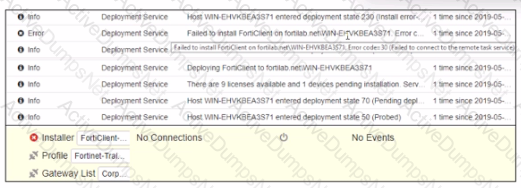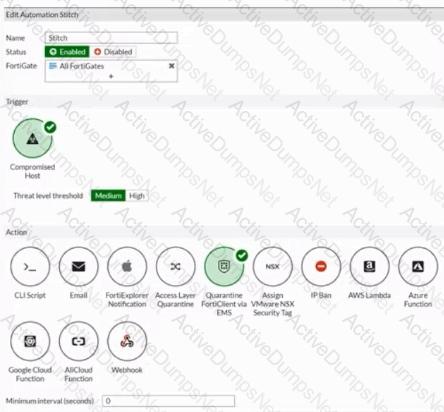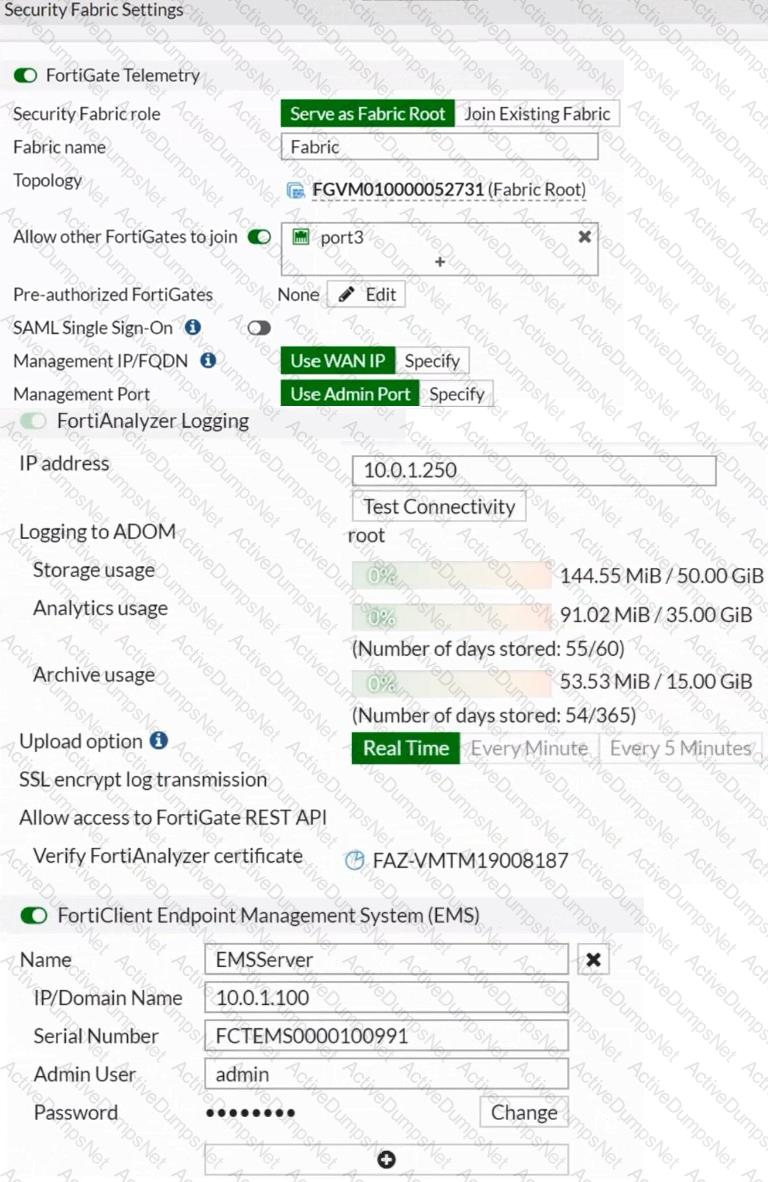An administrator must add an authentication server on FortiClient EMS in a different security zone that cannot allow a direct connection.
Which solution can provide secure access between FortiClient EMS and the Active Directory server?
An administrator needs to connect FortiClient EMS as a fabric connector to FortiGate What is the prerequisite to get FortiClient EMS lo connect to FortiGate successfully?
Refer to the exhibit.

Based on the CLI output from FortiGate. which statement is true?
Which statement about FortiClient enterprise management server is true?
Exhibit.

Based on the logs shown in the exhibit, why did FortiClient EMS tail to install FortiClient on the endpoint?
An administrator configures ZTNA configuration on the FortiGate. Which statement is true about the firewall policy?
Refer to the exhibit.

Based on the Security Fabric automation settings, what action will be taken on compromised endpoints?
Which statement about FortiClient comprehensive endpoint protection is true?
Which two statements are true about the ZTNA rule? (Choose two.)
ZTNA Network Topology

Refer to the exhibits, which show a network topology diagram of ZTNA proxy access and the ZTNA rule configuration.
An administrator runs the diagnose endpoint record list CLI command on FortiGate to check Remote-Client endpoint information, however Remote-Client is not showing up in the endpoint record list.
What is the cause of this issue?
Which component or device shares ZTNA tag information through Security Fabric integration?
Refer to the exhibit.

Based on the settings shown in the exhibit, which two actions must the administrator take to make the endpoint compliant? (Choose two.)
In a ForliSandbox integration, what does the remediation option do?
Refer to the exhibit, which shows the output of the ZTNA traffic log on FortiGate.

What can you conclude from the log message?
Refer to the exhibits.


Based on the FortiGate Security Fabric settings shown in the exhibits, what must an administrator do on the EMS server to successfully quarantine an endpoint. when it is detected as a compromised host (loC)?
An administrator installs FortiClient on Windows Server.
What is the default behavior of real-time protection control?